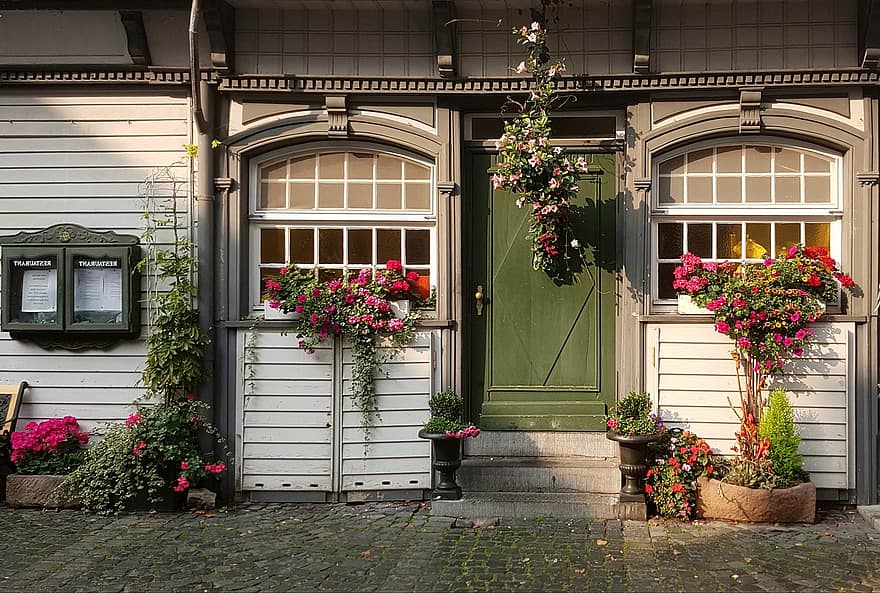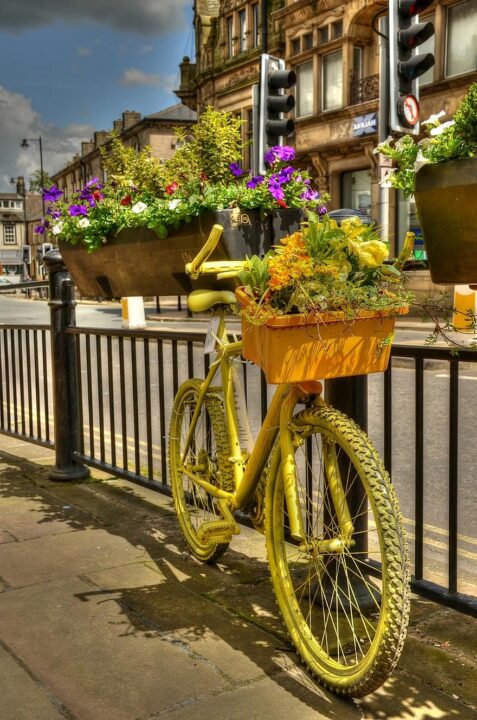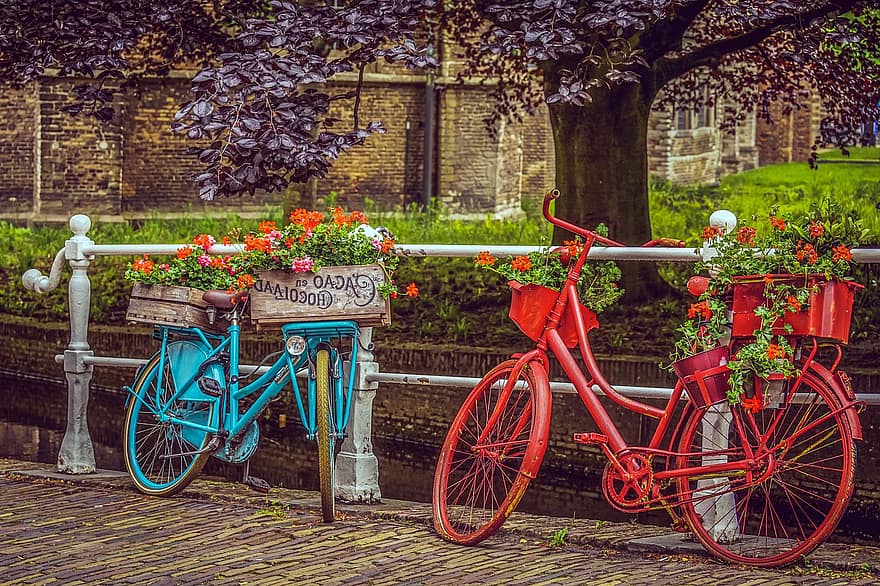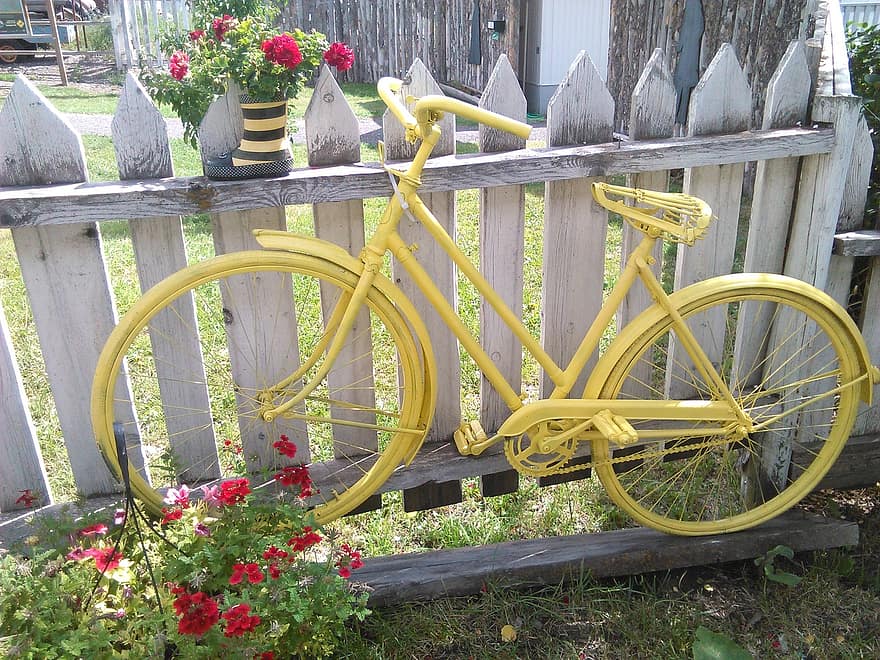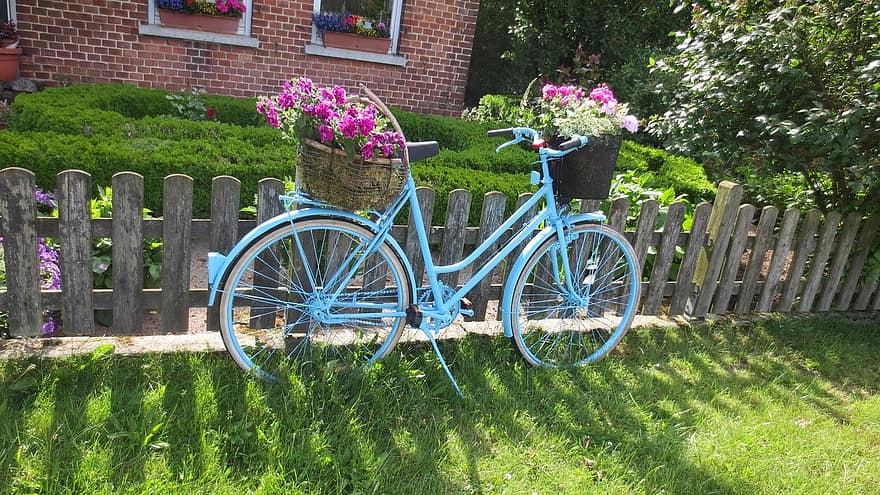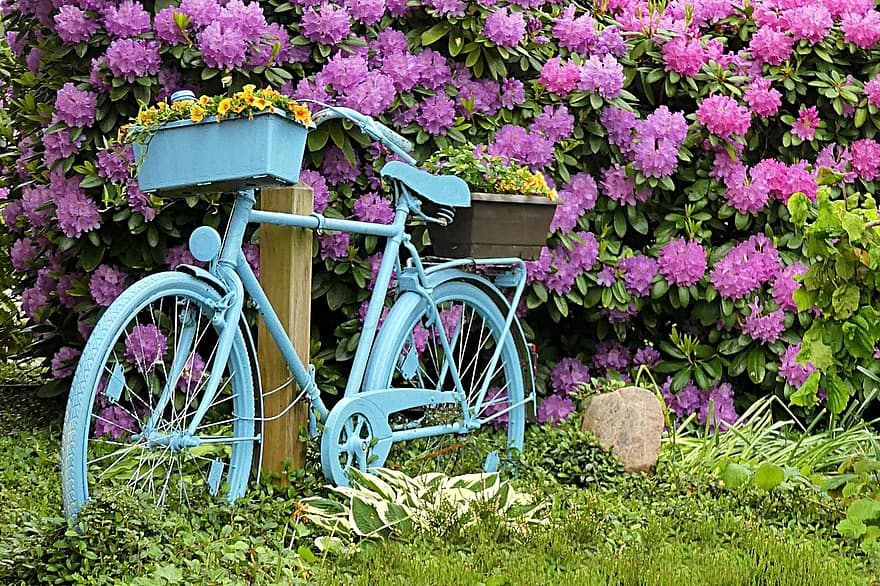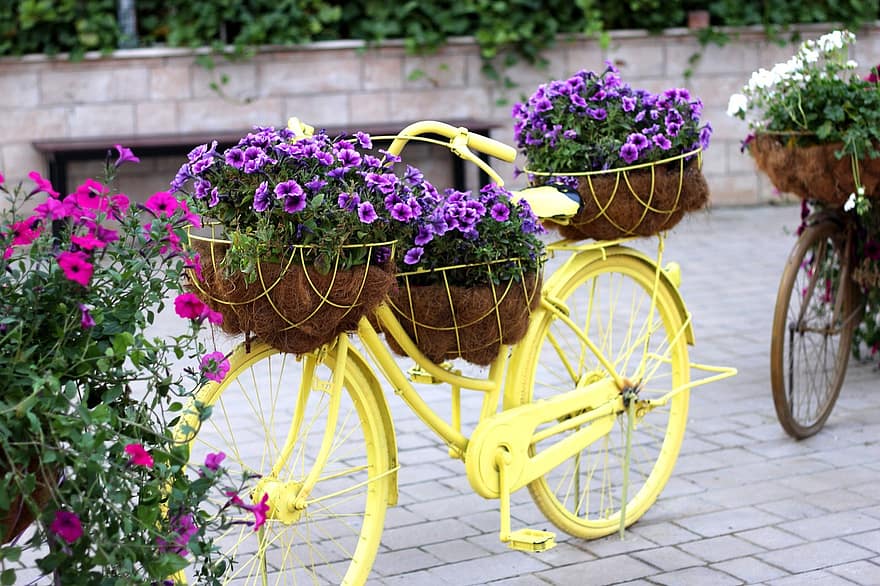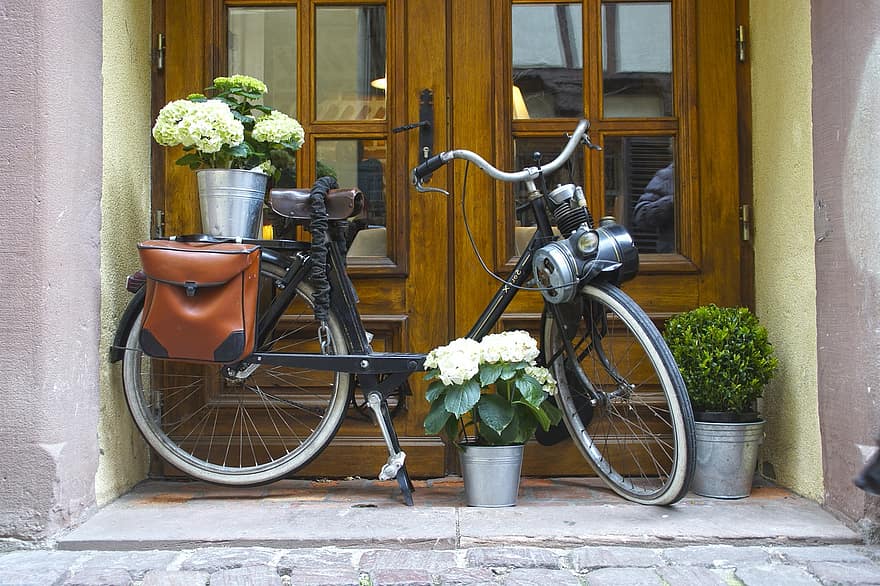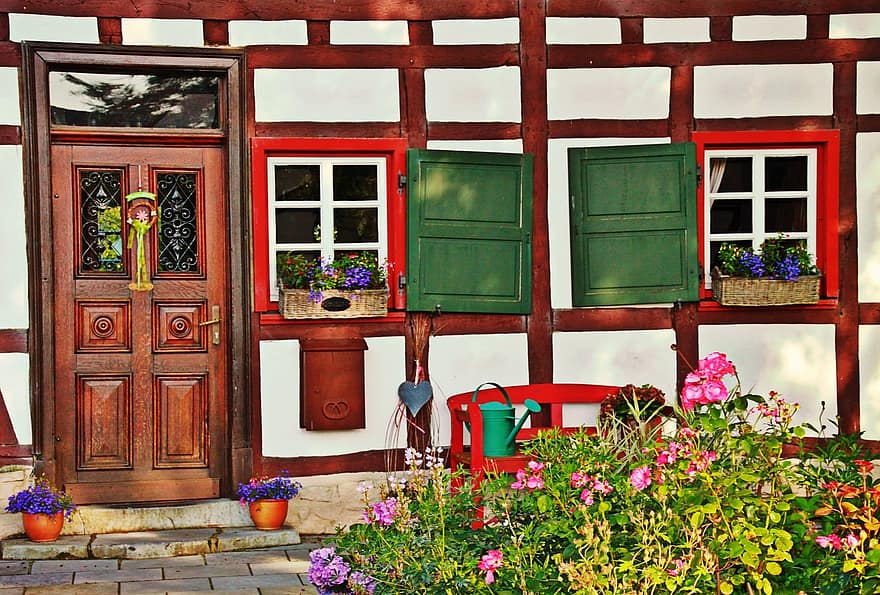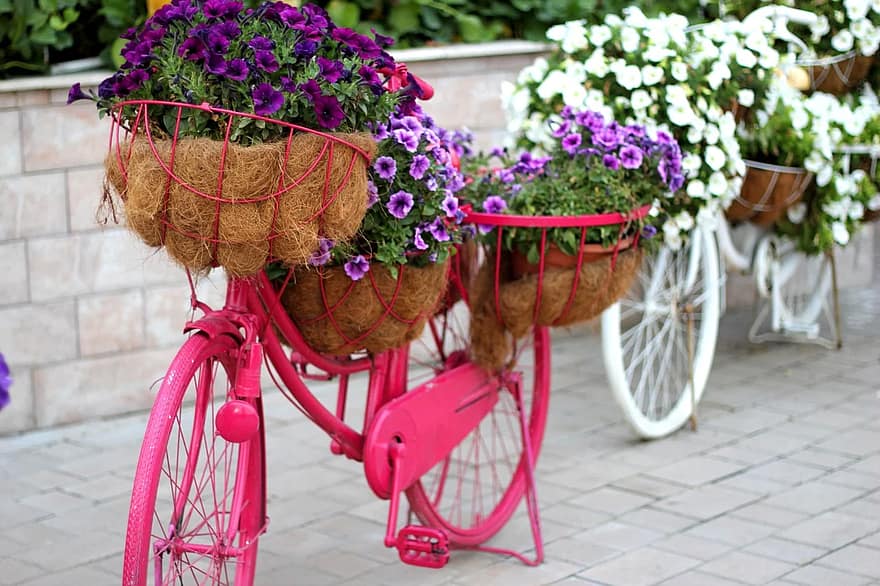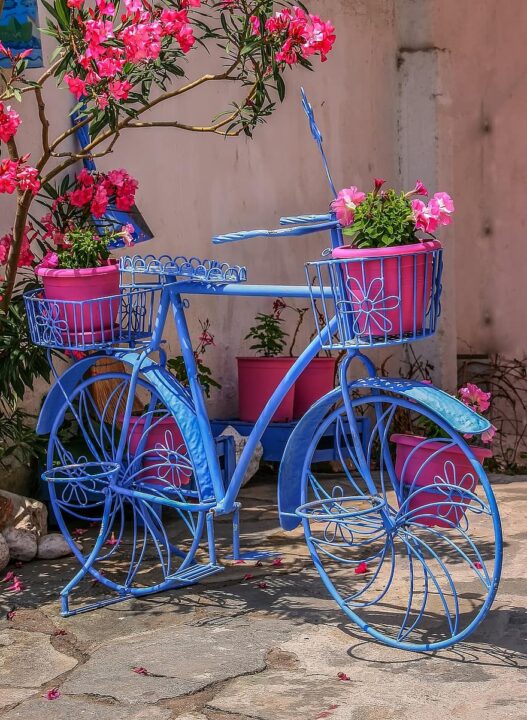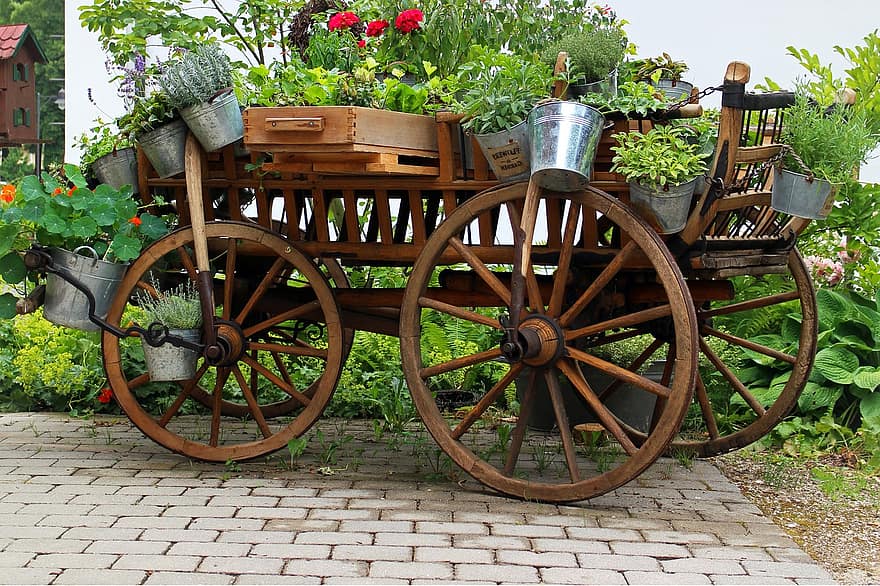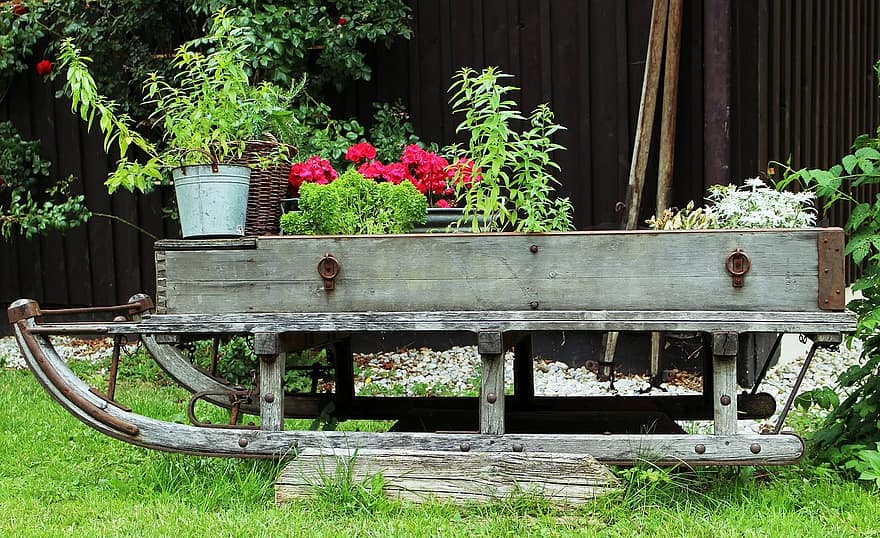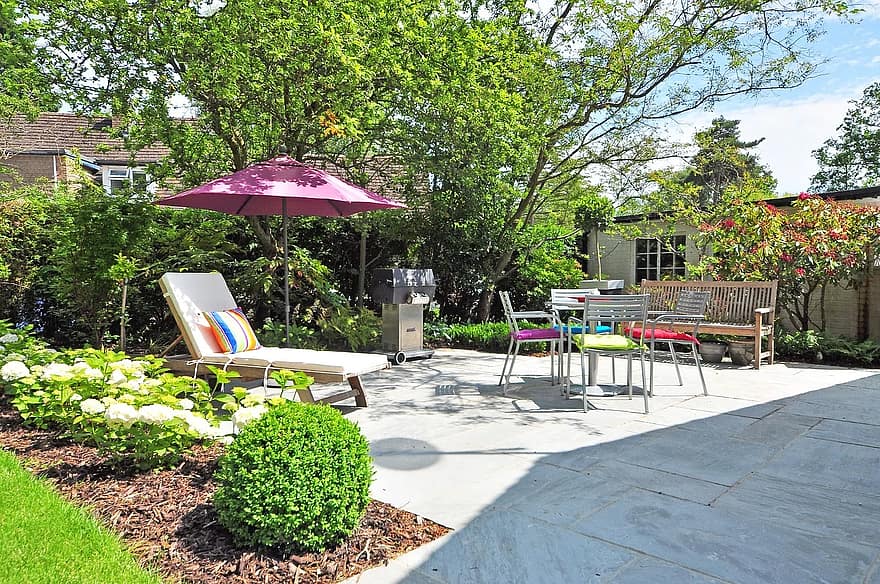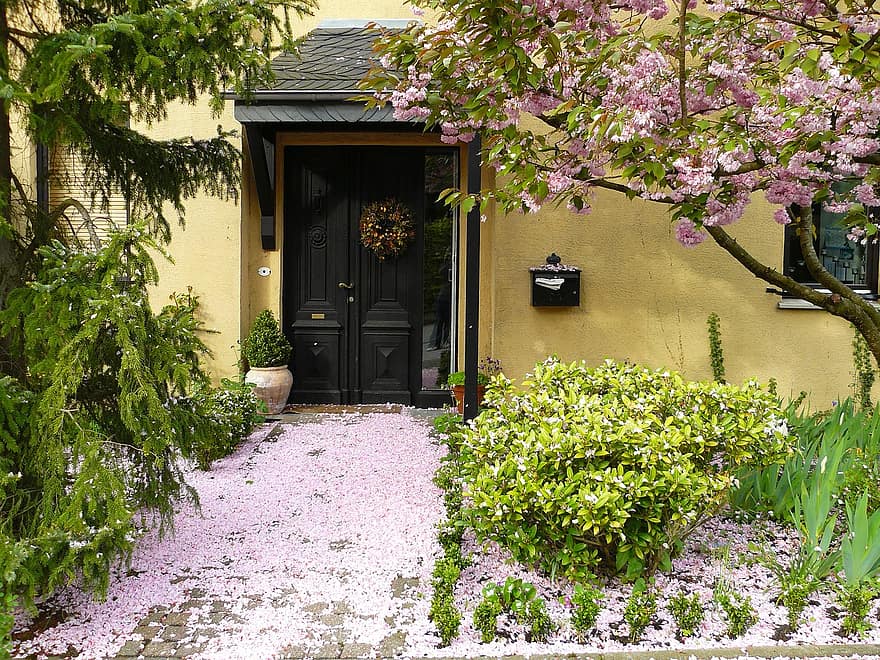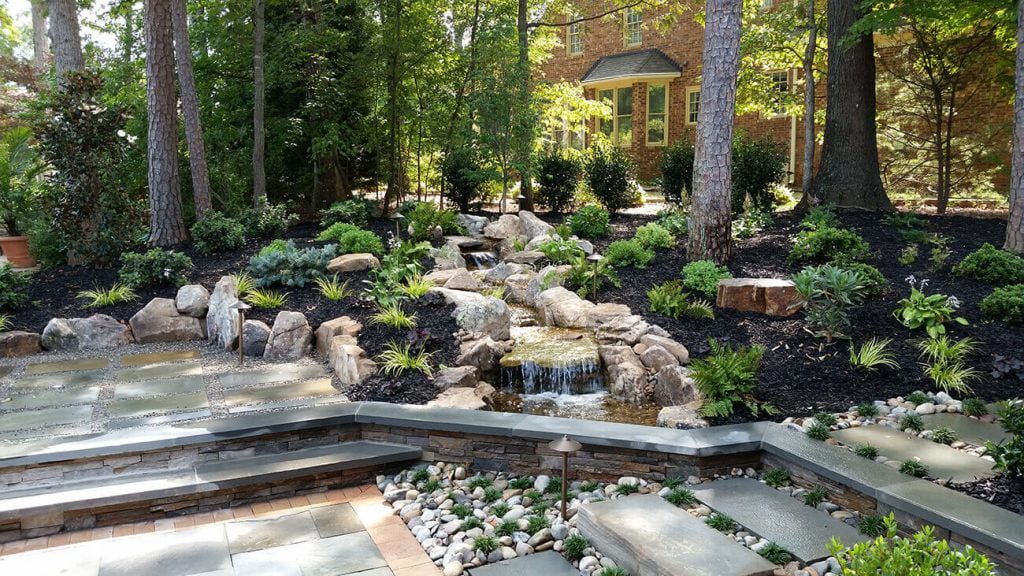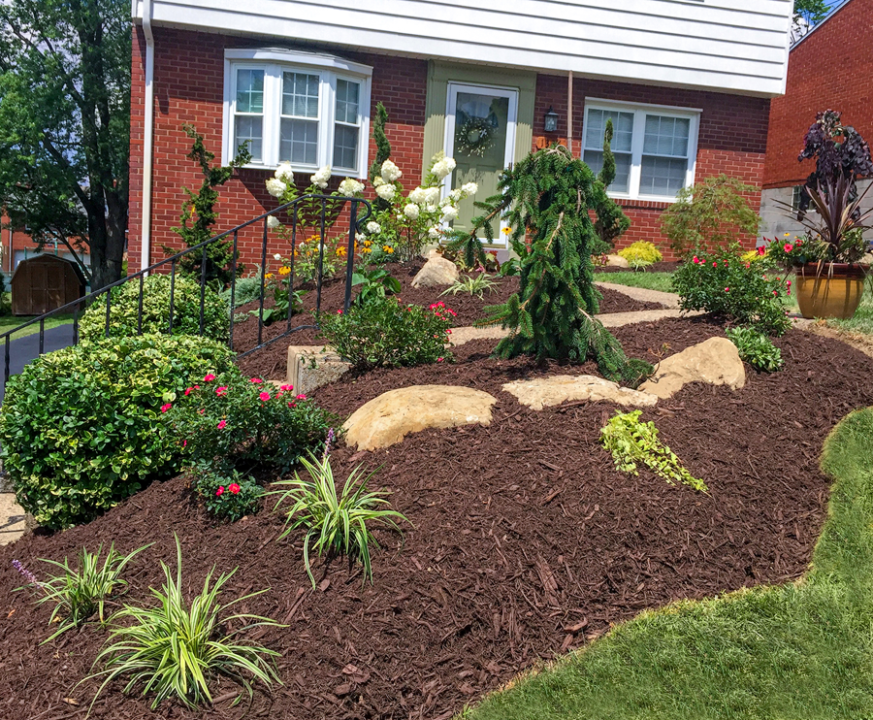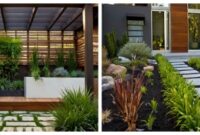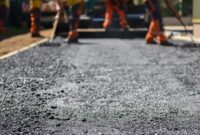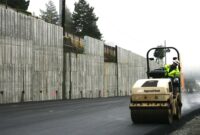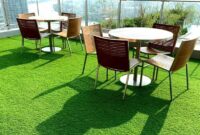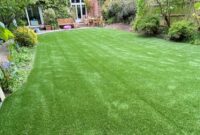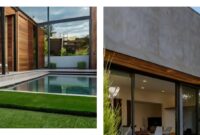One of the best front yard landscaping ideas with rocks and mulch is to line walls with flowerbeds. This looks great and is low-maintenance. Flowers like hydrangeas look especially gorgeous against walls lined with rocks and mulch. However, you can choose other types of plants, too.
These are some of the most popular options, and they are all beautiful and cost-effective. If you are looking for a different look, there are many options to choose from.
Front yard landscaping with rocks and mulch is a popular and visually appealing way to enhance the outdoor space in the front of your home. By incorporating rocks and mulch into your landscaping design, you can create a low-maintenance, attractive, and sustainable environment.
| Pros | Cons |
|---|---|
| Low maintenance: Requires less upkeep than traditional grass lawns. | Initial cost: Depending on the size of your front yard, purchasing rocks and mulch can be expensive. |
| Water conservation: Reduces water usage as rocks and mulch help retain moisture in the soil. | Weeds: While mulch helps control weeds, some may still emerge, requiring periodic maintenance. |
| Aesthetically pleasing: Rocks and mulch can create visually appealing and natural-looking landscapes. | Heat retention: Rocks absorb and retain heat, which can be problematic in hot climates. |
| Versatility: Rocks and mulch can be used to create various landscaping features such as pathways, rock gardens, or water features. | Erosion control: In areas with heavy rainfall or sloping terrain, rocks may not effectively prevent erosion. |
| Weed control: Mulch acts as a barrier, inhibiting weed growth and reducing competition for plants. | Limited plant options: Certain plants may not thrive in a rock and mulch environment, limiting your plant selection. |
| Sustainability: Using organic mulch can help enrich the soil over time as it breaks down. | Maintenance: While low maintenance overall, rocks and mulch may require occasional cleaning or repositioning. |
| Durability: Rocks are long-lasting and can withstand various weather conditions. | Accessibility: If your front yard requires frequent access for maintenance or other purposes, navigating around rocks may be inconvenient. |
Here are some ideas and considerations for front yard landscaping with rocks and mulch:
1. Water features
Water features are a popular addition to front yard landscaping that can add beauty, tranquility, and a sense of serenity to your outdoor space. Whether it’s a small pond, a fountain, or a waterfall, water features can create a focal point and enhance the overall aesthetics of your front yard. Here’s an explanation of water features:
water feature ideas – source
- Types of water features: There are various types of water features you can consider for your front yard:
- Ponds: Ponds can range in size and shape, from small decorative ponds to larger, more elaborate ones. They can be home to aquatic plants, fish, and other water creatures, and create a natural and serene atmosphere.
- Fountains: Fountains are a classic choice for front yard water features. They come in different designs, including tiered fountains, spouting fountains, and wall fountains. Fountains add movement and the soothing sound of flowing water to your outdoor space.
- Waterfalls: Waterfalls can be standalone features or integrated into existing landscaping elements. They can be built with rocks or other materials to create a cascading effect, adding a touch of drama and tranquility.
- Bubbling rocks or urns: Bubbling rocks or urns are smaller-scale water features that consist of a rock or urn with water bubbling up and then recirculating. They are relatively easy to install and can create a charming focal point in your front yard.
- Aesthetic appeal: Water features add a visually stunning element to your front yard. They create a focal point that draws attention and provides a sense of serenity and relaxation. The sound of flowing water can have a calming effect, making your front yard a peaceful retreat.
- Wildlife attraction: Water features can attract birds, butterflies, and other wildlife to your front yard. They provide a water source for animals to drink and bathe, adding a dynamic and lively element to your outdoor space.
- Customization options: Water features can be customized to match your personal style and preferences. You can choose different materials, shapes, and sizes to complement your overall front yard design. Incorporating plants, rocks, and lighting around the water feature can further enhance its visual appeal.
- Maintenance considerations: Water features require some level of maintenance to ensure they remain clean and functional. Regular cleaning, such as removing debris and maintaining proper water levels, is essential. Additionally, monitoring water quality and maintaining the filtration system (if applicable) is important to keep the water clear and healthy for any aquatic life.
- Energy consumption: Some water features, such as fountains, may require electricity to power the pump and other components. Consider the energy requirements and potential costs associated with operating your chosen water feature.
- Safety considerations: If you have young children or pets, it’s important to ensure the water feature is designed with safety in mind. Consider adding barriers, such as fences or nets, to prevent accidental falls or access to deeper water areas.
When planning a water feature for your front yard, it’s advisable to consult with professionals who specialize in water feature installation. They can guide you on the best location, design, and maintenance practices to create a beautiful and functional water feature that suits your specific needs and preferences.
read also: 51 Best Arizona Backyard Landscaping Ideas On a Budget
2. Xeriscaping Landscaping Ideas
Xeriscaping is a landscaping approach that focuses on creating beautiful, water-efficient, and sustainable outdoor spaces, particularly in dry or arid regions. The term “xeriscape” is derived from the Greek word “xeros,” meaning dry. Xeriscaping aims to reduce water usage, minimize maintenance requirements, and preserve the natural resources of an area. Here’s an explanation of xeriscaping: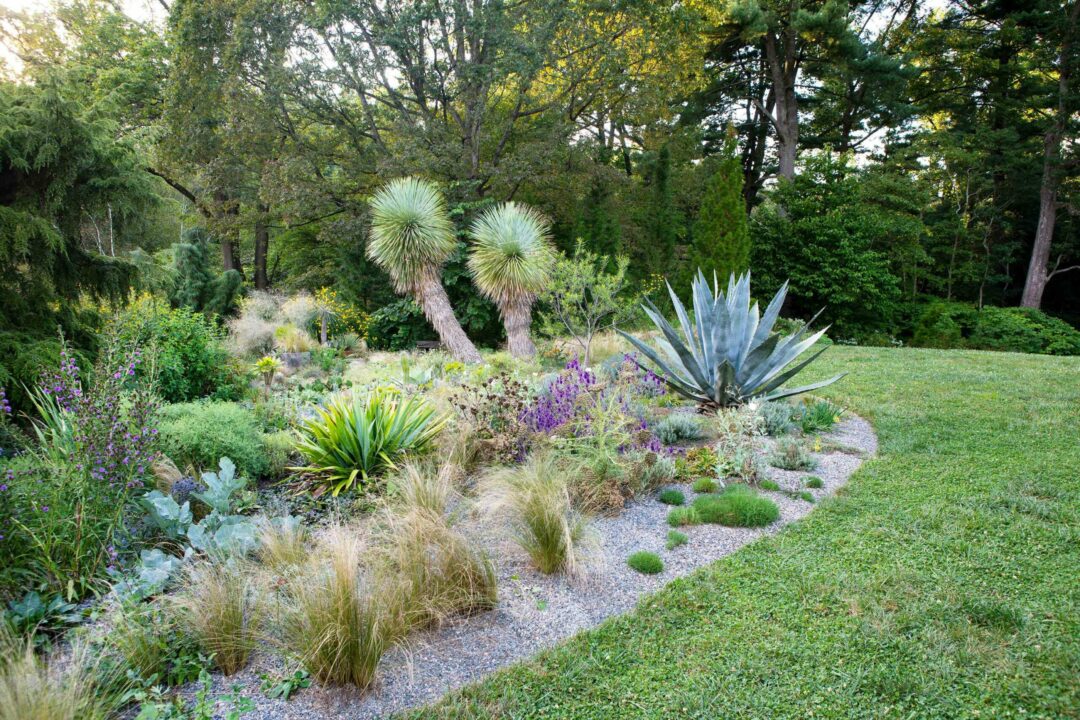
- Water conservation: The primary goal of xeriscaping is to minimize water consumption by using drought-tolerant plants and efficient irrigation methods. Xeriscaped landscapes are designed to thrive with minimal supplemental watering, relying mostly on natural rainfall. This approach is especially beneficial in regions where water is scarce or expensive.
- Plant selection: Xeriscaping incorporates native and drought-resistant plants that are well-adapted to the local climate and require minimal water. These plants have evolved to withstand the specific weather conditions of the area, including high temperatures, low rainfall, and dry soil. By choosing appropriate plant species, xeriscaping reduces the need for excessive watering.
- Soil improvement: Xeriscaping often involves improving the soil quality to enhance water retention and drainage. Adding organic matter, such as compost or mulch, helps improve soil structure, moisture retention, and nutrient availability. This supports healthy plant growth and reduces water runoff.
- Efficient irrigation: Xeriscaped landscapes employ irrigation techniques that maximize water efficiency. Drip irrigation systems, for example, deliver water directly to the plant’s root zone, minimizing evaporation and runoff. Smart irrigation controllers and soil moisture sensors can also be utilized to tailor watering schedules based on specific plant needs and weather conditions.
- Mulch usage: Mulch plays a vital role in xeriscaping by reducing evaporation, regulating soil temperature, and suppressing weed growth. Organic mulch, such as wood chips or bark, is commonly used in xeriscaped landscapes to retain moisture in the soil, enhance its fertility, and create an aesthetically pleasing look.
- Hardscaping elements: Xeriscaping often incorporates hardscaping elements, such as rocks, gravel, or pathways, to minimize the amount of water-intensive turfgrass areas. These elements can provide structure, texture, and visual interest to the landscape design while reducing maintenance requirements and water usage.
- Maintenance reduction: Xeriscaping is known for its low-maintenance characteristics. By selecting plants that are well-suited to the local climate and require minimal watering and pruning, xeriscaped landscapes reduce the need for regular maintenance tasks such as mowing, fertilizing, and pest control.
- Environmental benefits: Xeriscaping offers several environmental benefits. By conserving water, it helps alleviate the strain on local water supplies and reduces the need for costly water infrastructure. Xeriscaped landscapes also support biodiversity by using native plants that attract local wildlife, such as birds, bees, and butterflies.
Xeriscaping is a sustainable landscaping approach that embraces the unique characteristics of arid or water-limited regions. It promotes water conservation, reduces maintenance requirements, and creates aesthetically pleasing outdoor spaces that harmonize with the natural environment.
read also:
How to Make a Rock Garden – 47 Beautiful Garden Ideas You’ll Love
95 Best Front Yard Corner Lot Landscaping Ideas
Landscaping Front Yard For A Beautiful Garden Designs
3. Contrast and color combinations
Contrast and color combinations play a crucial role in front yard landscaping as they help create visual interest, highlight focal points, and establish a harmonious aesthetic. By strategically using contrasting colors, you can make certain elements stand out while achieving a cohesive and pleasing overall look. Here’s an explanation of contrast and color combinations in landscaping:
1. Contrast
Contrast refers to the juxtaposition of elements with different characteristics, such as colors, textures, sizes, or shapes. It creates visual tension and makes each element more noticeable. In landscaping, contrast can be achieved through various means:
- Color contrast: Using colors that are opposite or significantly different on the color wheel creates strong contrast. For example, pairing vibrant red flowers with deep green foliage or placing white rocks against a dark mulch background.
- Texture contrast: Combining plants or materials with different textures can create a visually appealing contrast. For instance, pairing smooth-leaved plants with spiky or rough-textured plants, or mixing smooth river rocks with coarse gravel.
- Size contrast: Contrasting sizes of plants or landscaping elements can create visual impact. Pairing tall, upright plants with low-growing groundcovers or placing large boulders next to delicate flowers can create an interesting size contrast.
2. Color combinations
Color combinations are the intentional selection and arrangement of colors to create a harmonious and pleasing visual effect. Some commonly used color combinations in landscaping include:
- Monochromatic: This color scheme involves using different shades and tones of a single color. It creates a harmonious and serene look, particularly when using different plants with varying hues of the same color.
- Analogous: Analogous color schemes involve using colors that are adjacent to each other on the color wheel. For example, combining various shades of blue and purple creates a calming and cohesive palette.
- Complementary: Complementary colors are opposite each other on the color wheel. Pairing these colors, such as orange and blue or yellow and purple, creates a high-contrast and vibrant look.
- Triadic: Triadic color schemes involve using three colors that are evenly spaced on the color wheel. This creates a balanced and dynamic combination. For example, using red, yellow, and blue together can create a bold and energetic color scheme.
3. Balance and harmony
While contrast and color combinations add visual interest, it’s important to achieve a sense of balance and harmony in your front yard landscaping. Consider the overall style and architecture of your home, as well as the surrounding environment, to ensure the colors and contrasts you choose complement the existing elements.
4. Considerations for front yards
When selecting colors and contrasts for your front yard, consider factors such as the color of your house, the natural surroundings, and the desired mood or theme. Lighter colors can make a space feel more open and airy, while darker colors create a sense of depth and drama.
Experimenting with different color combinations and contrasts can help you create a front yard that reflects your personal style and enhances the overall curb appeal of your home. It’s often helpful to gather inspiration from magazines, online resources, or professional landscapers to see how various color schemes and contrasts can be successfully implemented in landscaping designs.
4. Rocks and Mulch Function
Rocks and mulch are not only beautiful, but they also have function. They can help add structure to your yard, act as a natural border, and even absorb shock from large objects like a swing set.
You can even use these materials in areas where there is more sun than shade, such as in front of a pool or a swimming pool. They also add color and interest to any front yard, and they are very easy to maintain.
Applying a layer of mulch around your plants and flower beds helps to suppress weed growth, retain moisture in the soil, and regulate soil temperature. Organic mulch options like wood chips, bark, or straw can be used to provide a natural and attractive look.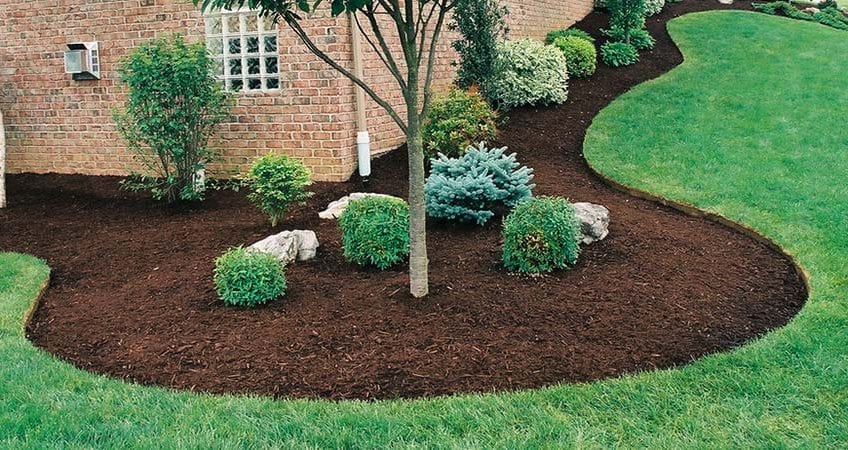
5. Effective Idea Using Rock and Mulch
Using rock mulch in your front yard is a simple yet effective idea. Mix up different types of rocks to create different designs. For example, you can create a stone pathway lined with various-sized stones, or you can use pebbles to line bushes and flowers. This will give your front yard instant curb appeal.
In addition, rocks are more weather-resistant than mulch, and you don’t need to replace them every few years. If you do decide to use rocks, make sure to cover the area with weed cloth to prevent weeds from popping through.
effective mulch and rocks ideas – source
6. Combination with Stone Path
Another great option for front yard landscaping ideas with rocks and mulch is to use a stone path. You can use varying-sized rocks to line your bushes and flowers. You can add a walkway along the side of your house to walk your dog and create instant curb appeal.
Additionally, rocks and mulch are both weather-resistant, so they don’t need to be replaced every couple of years. Remember to keep your rock paths weed-free with weed cloth.
Use rocks to create defined pathways or borders in your front yard. Arrange larger rocks to form a walkway leading to your front door or to guide visitors through your garden. Smaller rocks can be used as edging to separate different areas of your front yard, such as flower beds or a lawn.
Defining pathways and borders in your front yard landscaping using rocks and mulch is a practical and visually appealing way to guide foot traffic and separate different areas of your outdoor space. Here are the details about defining pathways and borders:
- Functionality: Pathways serve as functional elements that direct people to specific areas, such as the front door, backyard, or garden. By using rocks to outline and fill the pathway, you create a clear and defined route that is easy to follow. Borders, on the other hand, help establish boundaries between different sections of your front yard, such as separating a lawn from flower beds or a driveway from a garden.
- Rock selection: When choosing rocks for pathways and borders, consider the size, shape, and color that align with your overall design aesthetic. Larger rocks can be placed strategically along the edges of the pathway or border to create a sturdy and visually appealing boundary. Smaller rocks, such as gravel or pebbles, can be used to fill in the gaps between larger rocks or as a top layer over the mulch for a finished look.
- Pathway design: The design of your pathway can vary depending on your preferences and the layout of your front yard. Straight pathways offer a clean and direct route, while curved pathways can add visual interest and a more natural flow. Consider the width of the pathway to ensure it accommodates foot traffic comfortably.
- Edging with rocks: Using rocks as edging along the borders of your front yard helps to define and separate different areas. You can place larger rocks vertically or partially buried in the ground to create a visible boundary. This edging also helps to prevent mulch or soil from spilling into unwanted areas.
- Mulch placement: Mulch can be used as a filler between the rocks in pathways, providing a soft surface for walking while reducing erosion and weed growth. It also adds a contrasting color and texture to the overall design. Ensure that the mulch is evenly spread and packed down to create a smooth and level pathway surface.
- Lighting considerations: If you plan to use the pathways and borders at night, consider incorporating lighting fixtures. Path lights or spotlights strategically placed along the pathway can enhance safety and aesthetics while highlighting the beauty of the rocks and mulch.
- Maintenance: Pathways and borders made with rocks and mulch generally require minimal maintenance. However, periodic inspection and adjustment may be necessary to ensure that the rocks remain in place and the mulch is evenly distributed. Weeds may occasionally emerge between the rocks, so regular weeding may be required to keep the pathway neat and tidy.
Defining pathways and borders with rocks and mulch can add structure and organization to your front yard while enhancing its overall visual appeal. It provides a clear guide for foot traffic and creates distinct boundaries between different areas, resulting in a well-designed and functional outdoor space.
read more:
- Front Yard Landscaping Ideas With Rocks
- 95 Best Landscaping Ideas in Florida ♥ Minimalist Designs
- Front Yard Landscaping Ideas | Home & Garden
- Front Yard Corner Lot Landscaping – Home & Garden Ideas
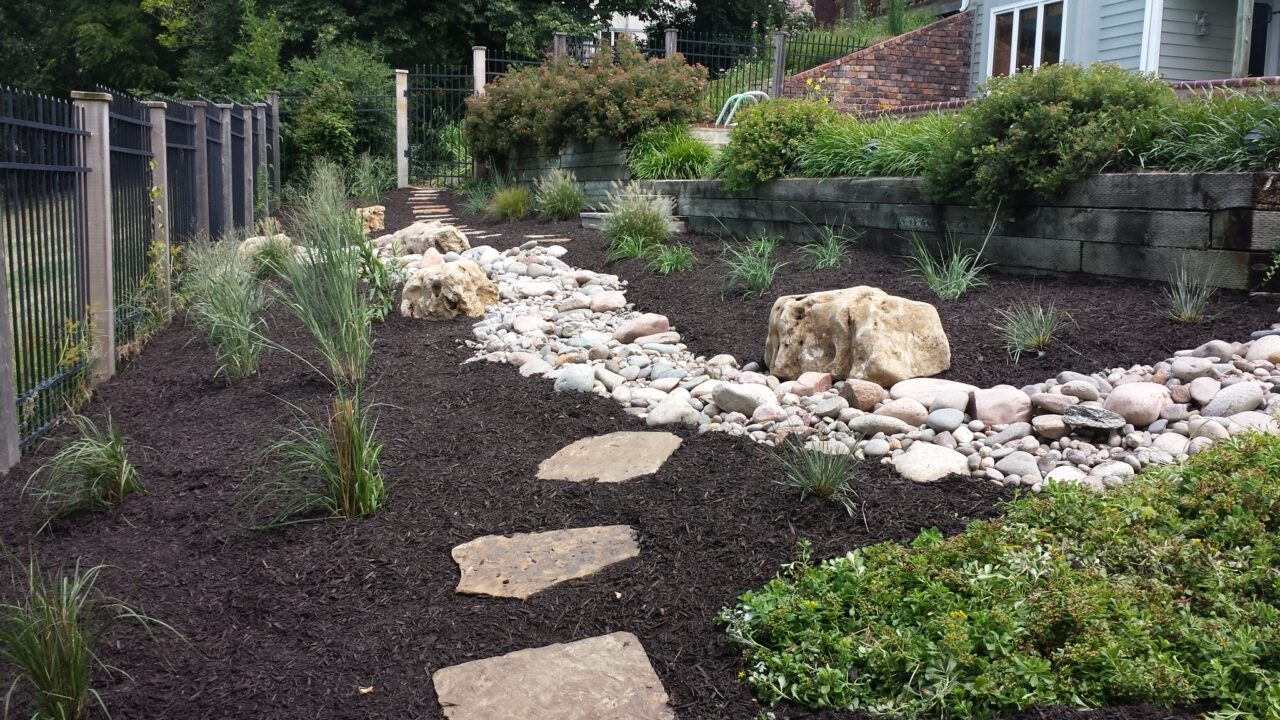
7. Make Different Rock Size
In addition to mulch, rocks are an excellent option for front yard landscaping ideas with rocks and mulch. A stone path can be made from rocks of different sizes. You can use a rock pathway to line bushes and flowers. A stone path is a great way to create instant curb appeal, and is a great way to add value to your home.
And, as a bonus, rocks and mulch are weather-resistant compared to traditional mulch, so you won’t need to worry about replacing them every couple of years. A weed cloth will prevent your plants from sprouting through the rock.
Create a rock garden in your front yard to add visual interest and texture. Select a variety of rocks in different shapes, sizes, and colors. Arrange them strategically to create a natural-looking rock formation. Intersperse drought-tolerant plants among the rocks to enhance the beauty of the garden.
read also:
- Backyard Ideas Without Fence | Home & Garden
- Low Maintenance Modern Backyard Ideas – Home & Garden
- 95 Best Backyard Remodel Ideas – Wood & Concrete Accent

8. Low Maintenance Materials
As you can see, rocks and mulch are two of the most popular front yard landscaping ideas. Both are low-maintenance and inexpensive. They are an excellent option for those with limited budgets and want to avoid the hassle of regular lawn care.
In addition to rocks and mulch, you can use a stone path to line bushes and flowers. They’ll add instant curb appeal to your front yard and add value to your home.
9. Stone Circle Decoration
A stone circle is an excellent way to define different areas of your front yard. A stone circle is a beautiful way to outline the area, and the ring of rocks is an attractive, inexpensive way to mark boundaries. Decorative gravel will help you to do that.
A stone circle can be used for garden beds as well as for landscaping borders around the yard. Adding these materials to your landscaping ideas with rocks and mulch will add beauty and style to your front yard.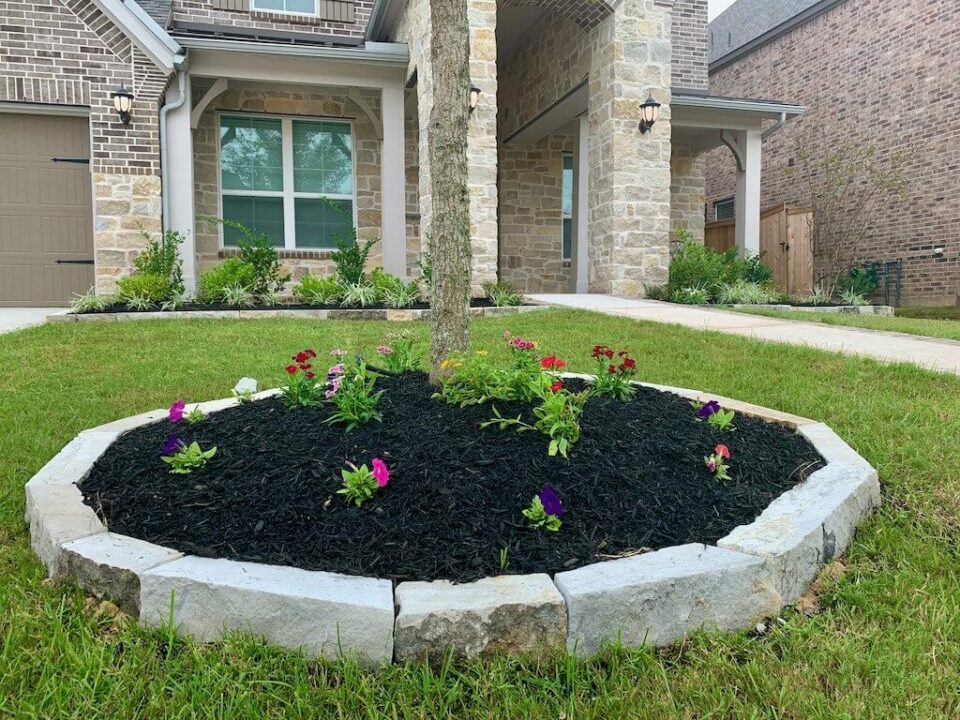
10. Flowerbed Inspiration
If you’re not into weeds, you can add some rocks and mulch around your flowerbeds. You can also use river rocks to create a pathway between two areas of your yard.
By lining bushes and flowers with rocks, you’ll not only create instant curb appeal, but you’ll also be reducing the cost of mowing and planting. These are low-maintenance landscaping ideas with rocks and mulch that will work well with any yard.
Build raised beds or rock walls in your front yard using rocks of various sizes and shapes. This can help create different levels and add dimension to your landscaping design. Fill the raised beds with soil and plant colorful flowers or shrubs for added visual appeal.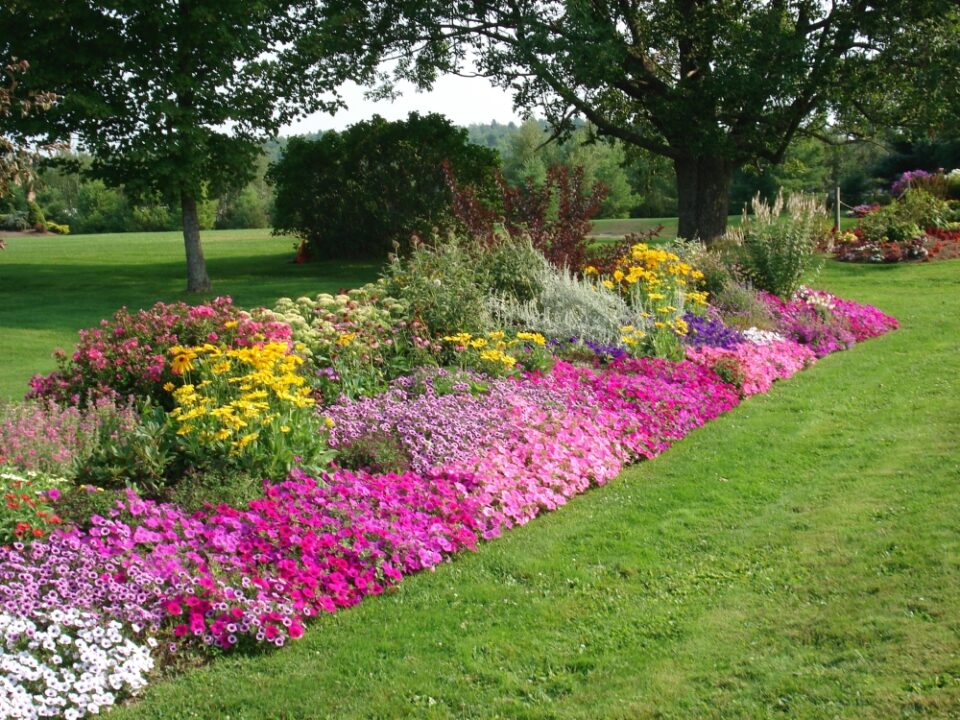
11. More Inspiration Front Yard Landscaping Ideas With Rocks and Mulch
